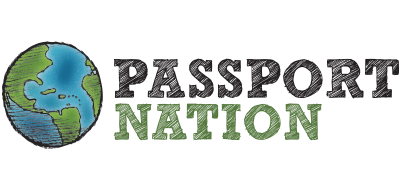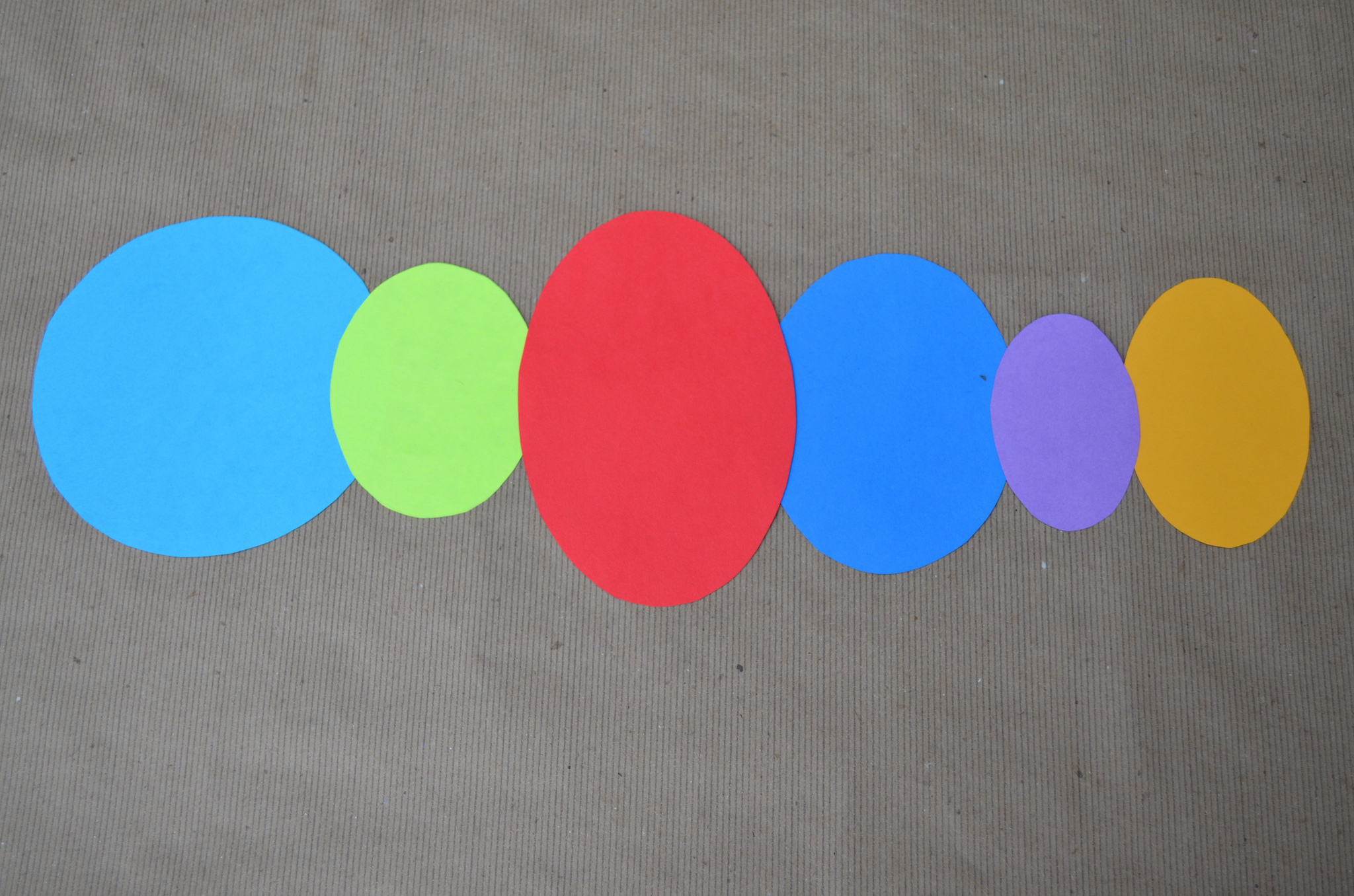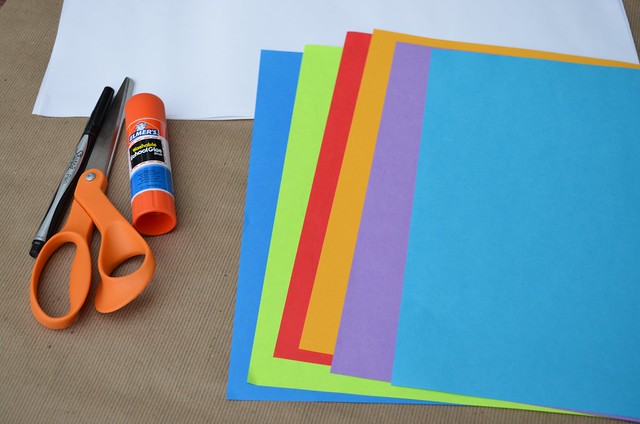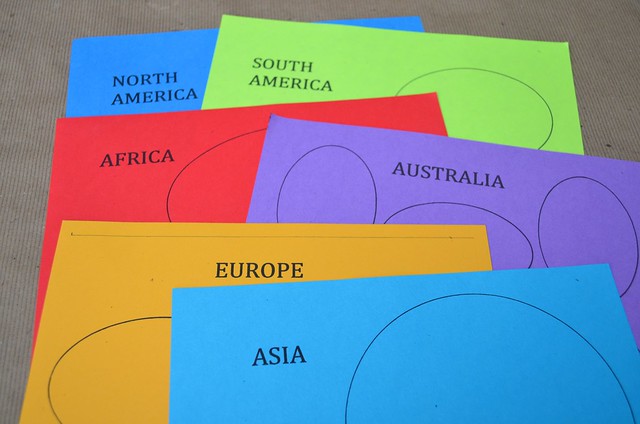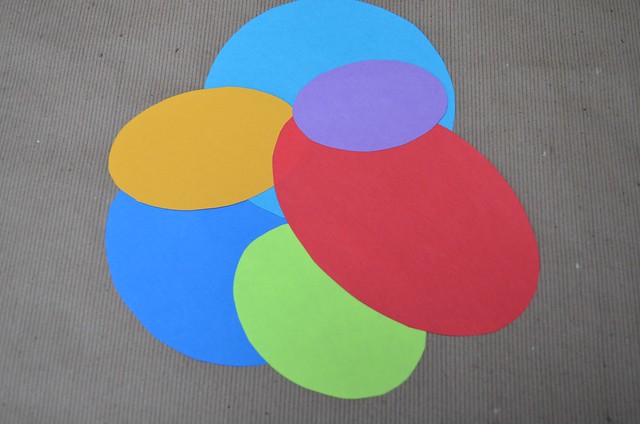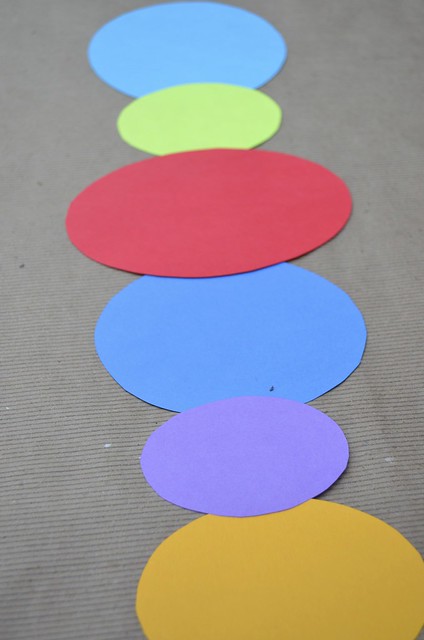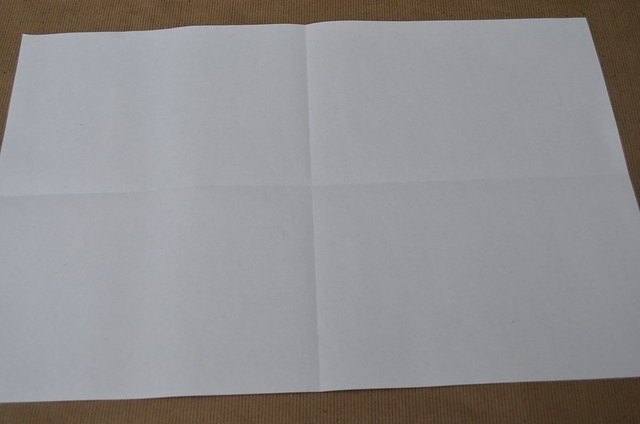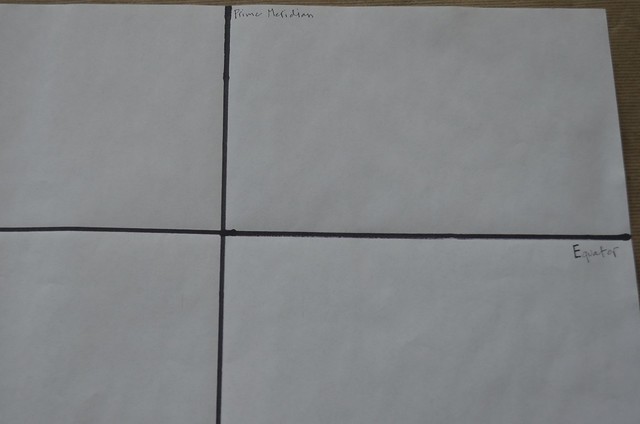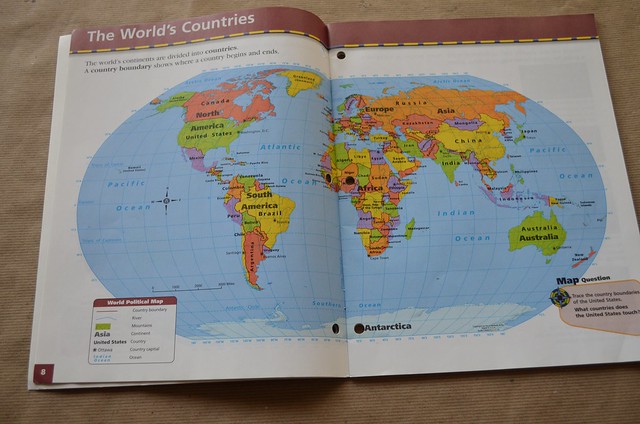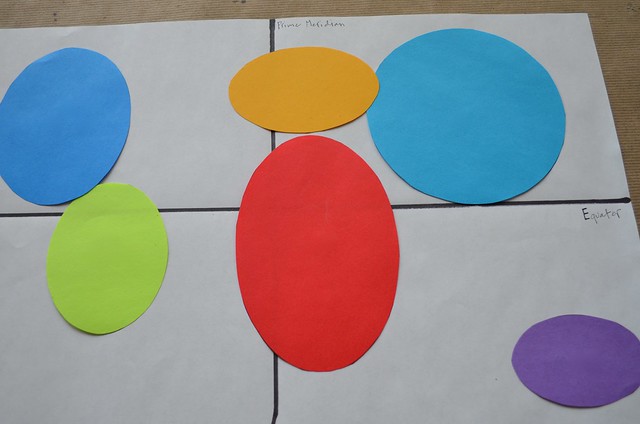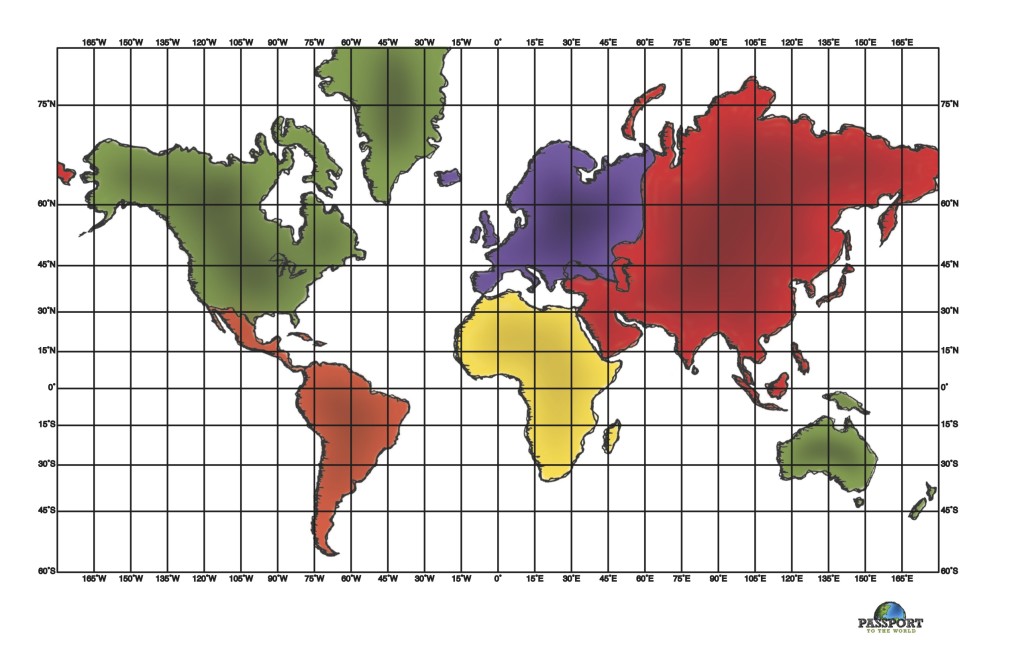Remember the classic game “Pin the Tail on the Donkey”? The point of that game is to place the tail on the donkey as closely to its “proper” location on the donkey’s rear as possible – while blindfolded. The idea behind this activity is similar – minus the blindfold…. and the donkey. 🙂
The purpose of this project is to introduce kids to the inhabited continents, as well as their relative sizes and locations.
What you will need:
- 1 piece of white paper (11″ x 17″) or 2 pieces of white paper (8 1/2″ x 11″ taped together)
- 6 different colored pieces of paper (8 1/2″ x 11″)
- A glue stick
- Scissors
- A black pen and marker
- A ruler (not pictured – oops!)
Instructions:
Start by printing each of the following templates onto one of the colored pieces of paper. {Template downloads are found at the end of this post.}
Next, cut out one of each of the circles or ovals representing the continents.
Fold the white piece of paper in half both directions. (Don’t have 11×17 paper? – improvise. Tape two pieces of 8 1/2 x 11 paper together. 8 1/2 x 11 + 8 1/2 x 11 = 11 x 17. Brilliant!)
With the black marker, draw straight lines on top of the folds. (Use the ruler here if desired.) These lines represent the Equator and the Prime Meridian. Label these lines.
Now allow your student(s) to play “pin the continents on the map”. By this I mean that you should allow students to attempt to place each continent in its proper location on the map (relative to the Equator, the Prime Meridian, and the various hemispheres). Have an atlas (or a picture of the continents from the internet) for comparison.
Some helpful terms defined:
- Equator – a measuring line that divides the world in half horizontally.
- Prime Meridian – a measuring line that divides the world in half vertically. The intersection of these two lines is 0° longitude and 0° latitude.
- Northern Hemisphere – the area north of the Equator
- Southern Hemisphere – the area south of the Equator
- Eastern Hemisphere – the area east of the Prime Meridian
- Western Hemisphere – the area west of the Prime Meridian
Tips for placing the continents on the map:
- Begin with Africa. It’s “armpit” is found at 0° longitude and 0° latitude.
- Asia is located with the very tip of the continent on the Equator.
- Europe lies north of Africa. Note where it crosses the Prime Meridian.
- Place Australia in the bottom right-hand corner.
- South America is mostly in the Southern Hemisphere but it does cross the Equator.
- North America touches the corner of South America.
Once you feel comfortable with the placement of each continent, glue the circles and ovals onto the white piece of paper.
Finally, label each continent.
All finished! If you are doing this activity with a group, simply print off the number of pages you need for each template. Note that the number of “continents” on each template is different.
Here are the free continent templates:
Note these fun facts about the geography of our world:
- A portion of Africa is located in each of the four hemispheres.
- Australia is the only inhabited continent completely in the Southern Hemisphere.
- North America is completely in the Northern Hemisphere.
- The Prime Meridian runs through Greenwich, England and is the international standard for time. All countries measure their time zones according to the Prime Meridian.
- The International Date Line is opposite of the Prime Meridian.
